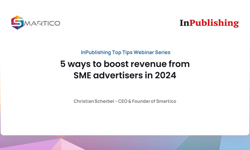Publishers can unlock the true value of their online inventory if they allow access to the wealth of user data they’re sitting on and use that to aid programmatic trading, media agencies say. Fears that publishers’ valuable figures will somehow be stolen or misused has meant data that could help brands significantly improve their targeting and results have been largely kept under wraps – to the detriment of publishers and their advertiser clients.
Information on publications’ readers – not only what they read but who they are, what they earn, where they live and what they buy – has always been a prized planning tool for publishers and agencies. But in the era of granular, real-time data production, and real-time trading, great data can be a gold mine. Programmatic trading accounts for a growing proportion of online ad investment; this is the automated system by which software rather than people put together deals that match advertisers’ wish lists and budgets with publishers’ inventory and consumers. Programmatic ad buying in the US alone rose by 75 per cent last year and is forecast to top $9 billion by 2017.
Data is key
Data, media agencies and progressive publishers say, is the key to generating worthwhile CPMs from programmatic trading. While there are fears that programmatic is a catalyst for lowering rates, the counter-argument is that, because it allows advertisers and their agencies to target distinct audiences in an efficient way, publishers can charge top dollar for the most sought-after and difficult-to-reach audiences.
Tom Bowman, SVP sales operations and commercial production with BBC Worldwide, said: “You can’t put the technology back in the box, so how do you take advantage of it and not get screwed? The answer is data. Put stuff in the market that you’ve marked up.
“He who owns the data can really mark up their inventory. If you’re stupid enough as a publisher to let someone else do your selling for you, then don’t be surprised if they make all the money.” Publishers need to prove that their inventory commands a premium, calculate what their sales teams cost and what they generate, and then work out the best balance of the two routes to market.
“Data is a massive investment,” Dennis Publishing’s Jamie Labate said. “But data investment is paramount. It gives trading desks a reason for the premium price.”
David McMurtrie, Google’s head of publishers – UK partner business solutions, says audience is the currency everyone’s now trading with. “The big opportunity is audience; it’s a new currency which is really underpinning what we do. Brands want to buy specific audiences.”
But publishers have so far been slow to respond to advertisers’ demands for better audience targeting, McMurtrie said; while 92% of media buyers buying direct from publishers use some form of audience targeting, nothing like that proportion sold data-based packages – linking demographic and behavioural data, for instance – allowing different audiences to be selected. This put publishers in a weak position and depressed yields. “Currently, all the power and control is with the buyer, they’re dictating the value of audiences,” he said. “This is an equation that’s completely the wrong way around. Take control of your data, use third-party data and deliver the kind of CPMs that are going to deliver returns for advertisers.”
Media agencies, traditionally the go-to guys for data and analysis of consumption patterns and audience information, say there’s strong demand from advertisers and agencies for premium-quality inventory to be traded programmatically. Manning Gottlieb OMD’s executive director and head of operations, Katie Eyton, said there was too little available now, and what there was remains poorly labelled, with much of the inventory available straight-forward run-of-site, which led buyers to be wary and question its value.
Pete Robins, managing partner of Agenda21, a digital media planning, buying and analytics agency, said the big issue was who determines the price of inventory. “Most clients probably couldn’t give a toss about how we buy their media. This is very much an internal agency way of working to increase margins,” he said. “For most agencies, to work out what you’re prepared to pay is a really difficult thing to do. Most clients don’t have enough info to work that out, and agencies often don’t know.
Fear of data theft
Coupling data with programmatic trading would require, however, publishers to work in a new way with agencies - with a higher degree of sharing than ever - for mutual benefit. Media agencies say that, at the moment, too few publishers are willing to share data that would be highly useful to them and their clients, fearing it would be stolen.
Scott Moorhead, head of digital trading and operations with Havas Media said this was a misconception. “We don’t nick your data. We don’t have any real need to steal your data. All we want to do is have the data on audiences … and be able to buy that user. We don’t need to be taking and hoarding and stealing media owners’ data.” Agencies suggested that if they wanted something special from publishers, or wanted exclusive access to aspects of publishers’ data, they would expect to have to pay for it. “I don’t think agencies are resistant to paying a fair price for data,” Eyton said.
Instead of worrying about having data stolen, publishers should start worrying about how they are going to value it and employ it. Openness and collaboration would produce impressive results for clients, agencies say, and that means clients will advertise that way again, benefitting publishers.
So, what kinds of data do agencies want from publishers? They say they need a richer understanding of the audiences that have value to advertisers – something they sense they have only a fraction of compared to what publishers know about their readers. One agency exec says geo-positioning is high on his wish list. “We know categorically that a location-specific message drives 75 per cent improvement in click-through and conversion. I can’t find enough location data,” he said.
Pete Robins says the comms industry has lost the art of planning and selling as more technology has become available; the craft of planning needs to be rediscovered, strengthened by data, he said. “Publishers need to be better at packaging and describing what they’ve got, and we need reasons why we should be selling it. None of us has done a good enough job to convince clients to spend and why they should be doing it.” Driven by the need to deliver short-term business results, agencies have allowed search and retargeting to become unduly dominant, as they often show the most demonstrable returns in the immediate term. “That’s a catastrophic failure of our industry.”
Google’s McMurtrie suggests three ways in which data can be used by publishers. First, to create unique inventory packages that could include an element of customisation. Second, publishers could sell specific audiences at scale, using first and third-party data to focus on audiences, then programmatically trade in those audiences to buy more of these eyeballs. Third, they could work on more creative options for advertisers that would make their space more attractive, providing a “richer canvas” at scale.
Proprietary data
Jamie Labate, deputy managing director of advertising at Dennis Publishing, says working so openly with proprietary data takes bravery on the part of publishers.
“We’re at the beginning of this process; there are other publishers further ahead with this. The story here is about publishers trying to fundamentally take control over their own data, which allows trading desks in real time to access that data and use it across the web,” he said.
Private exchanges or “walled gardens” in which inventory can be traded with individual advertisers are, like programmatic more broadly, also reliant on convincing audience data. “They’re only really valuable if you can give an agency or an advertiser a reason to enter into an agreement in the first place,” Labate said. While advertisers can buy in third-party data from suppliers such as Experian, what’s really valuable is the first-party data that only publishers can provide. Behavioural data about how people use publishers’ site – what they read, where they go next and their dwell time on different elements of a site – are part of that, and can be used with the demographic and keyword search information that’s been available for some time. “Barriers against ‘just giving it away’ are coming down,” he said. “If it works, it works.”
It’s easy, Labate says, to serve up in real time a group of readers who have been searching for a particular make and model of car, for instance. But the value might be, to a motoring manufacturer with an ad targeting women, being able to prove how many women are visiting a site. Does that kind of data and targeting actually translate into better yields for publishers? “It should do,” says Labate. “I think we’ve got a way to go still.” One of the obstacles is the way prices are set; if the price is paid per cookie planted, then for a narrow target market like company CEOs, once an individual has been cookied, there’s no further value in serving an impression to that person – even though this clearly remains a valuable target.
James Brown, general manager, digital advertising, at The Telegraph, said the company had been uniting the data it has generated through subscriptions, e-commerce and competition entries. “We recognised that we have very large pots of data. We recognise there’s a great opportunity to pool it into one place, to tailor the consumer experience, build rich ad products and drive revenue,” he said. This had led to a virtuous circle being created, tailoring the consumer experience better, which fuelled consumption and purchase, and that, in turn, drove the commercial arm of the business.
Serving up and making sense of data is no small task, though, requiring a fresh approach to recruitment for a unique combination of skills to handle the breadth and depth of data becoming available.
Mediacom managing partner and head of media, Stefan Bardega, says the agency now has 45 econometricians on board. “Data is where the point of differentiation comes for agencies,” he said, because the technological aspect of planning and buying had largely been commoditised. Combining macro data like the weather, with social media data, clients’ own data and third-party data in real time was the way to have an outstanding impact.
Caroline Van Den Bos, insight & NPS director at the insurance group Royal & Sun Alliance, says it’s tough to recruit the kind of hybrid analyst-consultants that the data-driven world demands. “You get maximum benefit from data when you can draw it together with all sorts of other sources of data, right through to something someone said once, and being able to draw a real picture of what’s happening in the marketplace. That’s a real skill.”












